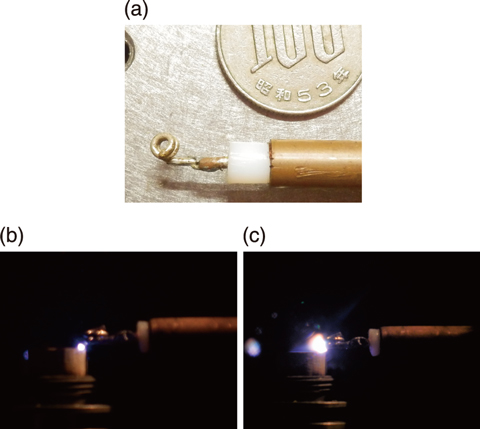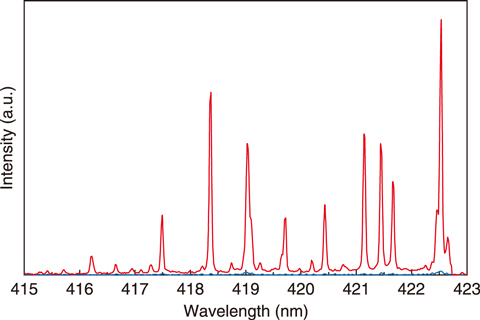
Fig.1-6 Microwave electrode (a) and plasma emission (b) (c)

Fig.1-7 Emission spectrum (gadolinium oxide sample)
The fuel debris generated by the accident at TEPCO’s Fukushima Daiichi NPS is highly radioactive, thus making it difficult for people to come in close proximity to it. As collecting fuel debris by a remote controlled operation and transporting it to an analysis facility is time-consuming, an in situ remote analysis of fuel debris would be a safe, efficient alternative. Therefore, laser-induced breakdown spectroscopy (LIBS) was developed to enable in situ analysis in a furnace.
LIBS is an analysis method used to identify the elements contained in a sample by irradiating the surface of the sample with a high-energy laser pulse and analyzing the plasma emission spectra using a spectrometer. An easy-to-operate optical fiber is used to transmit the laser beam into the furnace. A high-resolution spectrometer is required to analyze elements such as lanthanoids in fuel debris, but the emission that passes through such a spectrometer becomes weak and gets buried in noise and thus cannot be detected; it is therefore necessary to enhance the emission itself. Increasing the laser power will increase the emission intensity, but will also damage the optical fiber, so this method cannot be used to increase the emission intensity.
Therefore, a method to increase the plasma emission intensity using microwaves instead of increasing the laser power was developed. The plasma emission can be sustained for a long time by the microwaves, and the total emission increases by time integration. Conventionally, a metallic waveguide was used to transmit microwaves because of its low transmission loss, but the waveguide cannot be bent freely, and it is difficult to transmit it to a narrow space such as in a furnace. Therefore, for increased compactness and bending freedom, a bendable coaxial cable was used. In addition, a method for bringing the electrode attached to the tip of the cable close to the plasma was devised, without using a resonator to increase the electric field of microwaves in the interaction area with the plasma. As a result, the system was simplified with high flexibility and good operability.
The prototype electrode, as shown in Fig.1-6(a), contained a semi-rigid coaxial cable with an outer diameter of approximately 6 mm and a conductor of approximately 25 mm attached to the core wire at the end and wound into a spiral shape. The enhancement effect can be obtained without winding, but winding was thought to increase stability and compactness by avoiding a fluctuating tip. Photographs of emission at the tip of the electrode are shown in Fig.1-6(b) (c); the emission grew stronger when the microwave was input. An example of the acquired emission spectrum is shown in Fig.1-7. The microwave used has a peak output of 1.3 kW and a duration time of 1 ms. When the microwave is not applied, the plasma emission disappears in approximately 10 μs; by applying the microwave, emission can be continued for between several 100 μs and 1 ms. Due to this effect, the total emission light was approximately 50 times greater than that without the microwave. This development presents a step forward in the search for a compact, simple, highly sensitive, and high-resolution system.
(Masaki Oba)